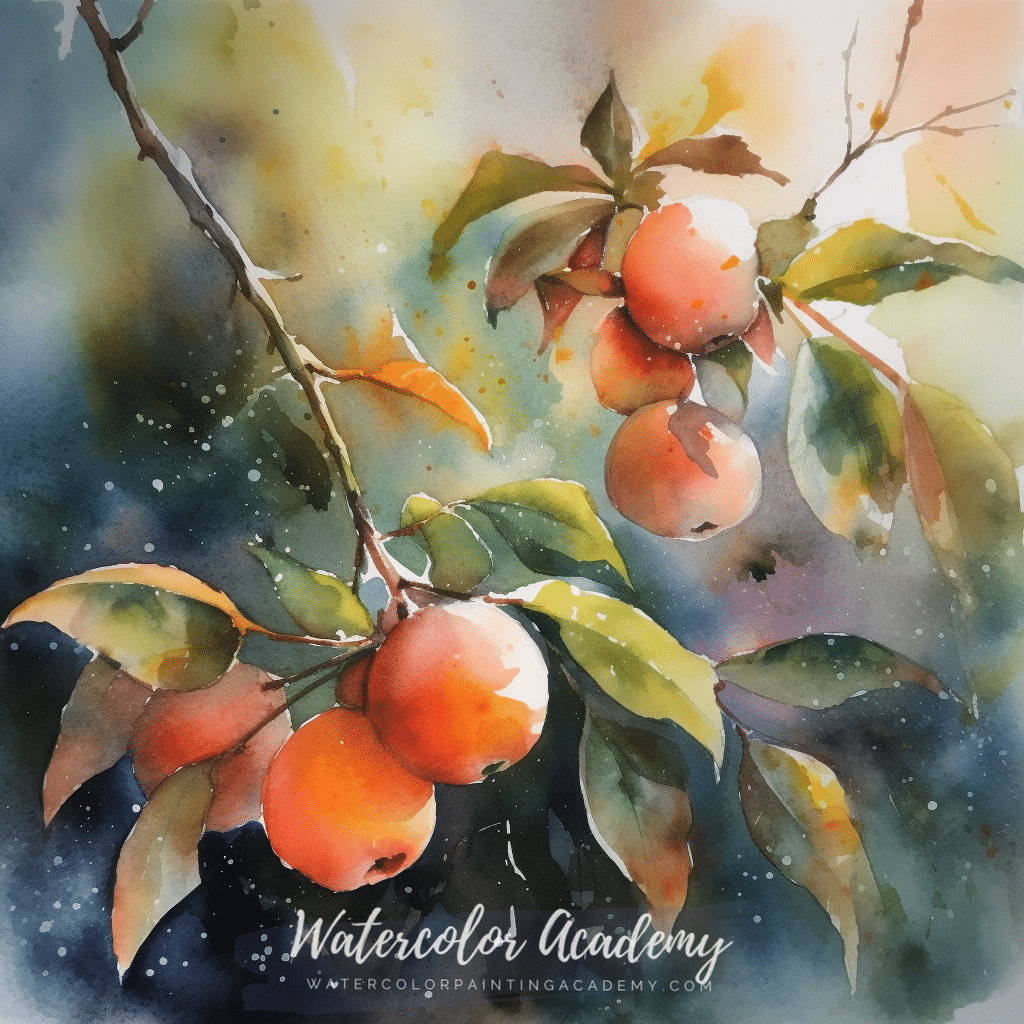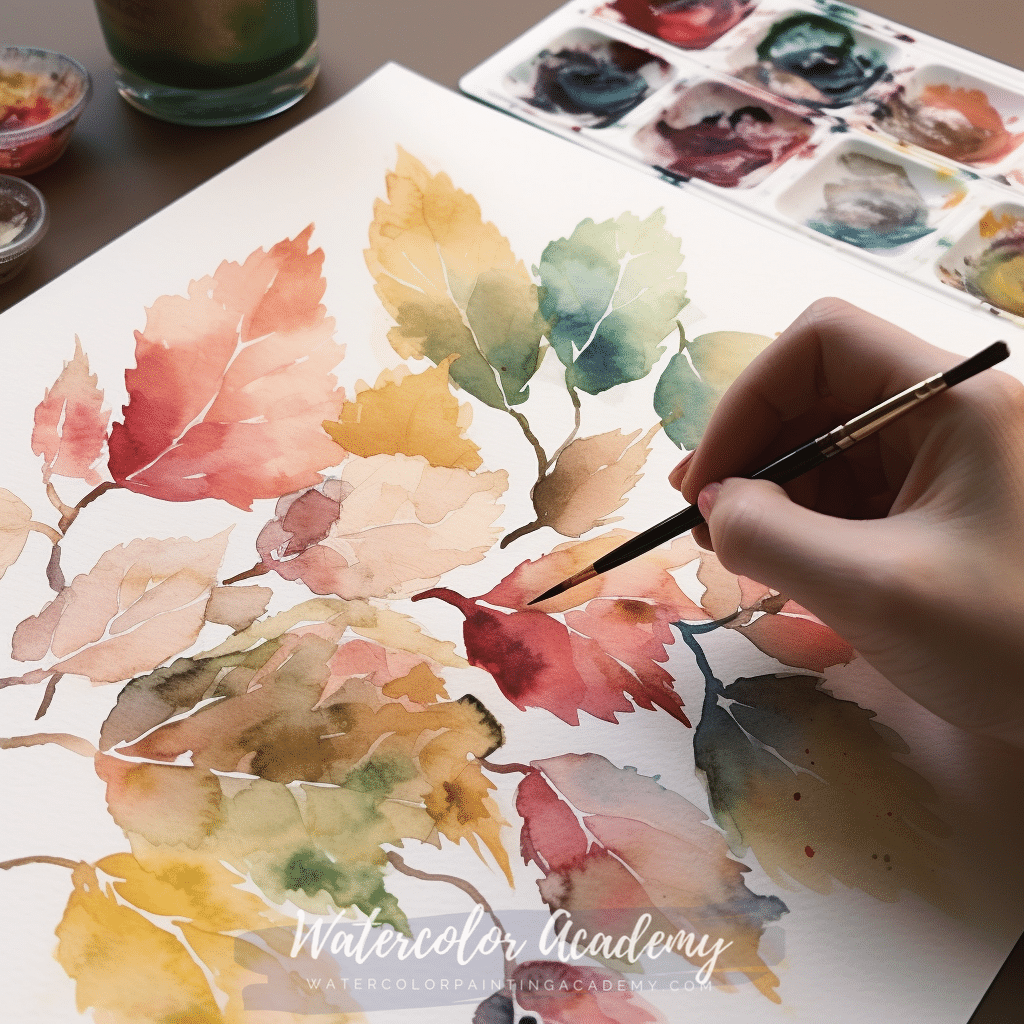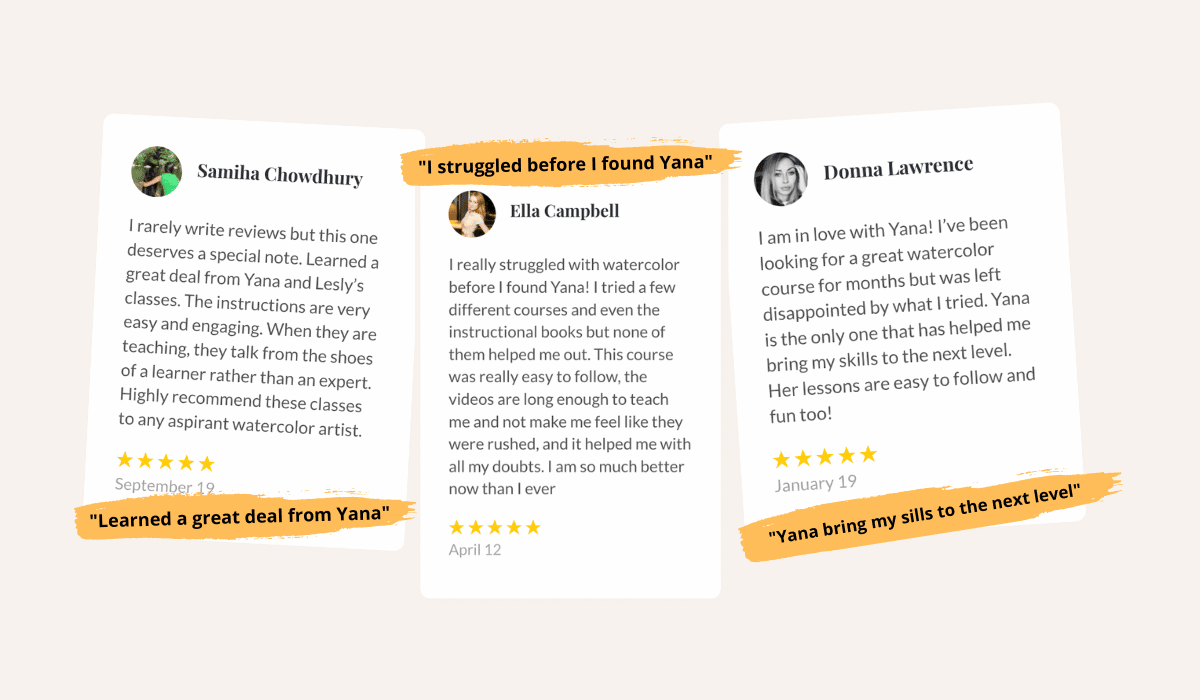Introduction
Watercolor painting is famous among artists for its luminous, transparent quality and versatility. Watercolor can create various effects, from delicate washes to bold, expressive strokes. There are two main watercolor techniques: wet-on-wet and wet-on-dry.
Wet-on-wet and wet-on-dry techniques differ in how the paint is applied to the paper. In wet-on-wet, the paper is already wet before the paint is applied, creating a soft, blended effect.
Wet-on-dry involves applying paint to dry paper, allowing for more precise and controlled brushstrokes.
Both techniques have unique advantages and disadvantages, and choosing the right one depends on the desired effect and the artist’s preferences.
This blog post will provide an overview of the differences between wet-on-wet and wet-on-dry watercolor techniques.
Wet-on-wet Watercolor Technique
Wet-on-wet is a popular watercolor technique that involves painting on wet paper. The method allows the paint to flow freely and blend in beautiful, unpredictable ways.

Here’s a step-by-step guide on how to use the wet-on-wet watercolor technique:
Wet the paper: Before applying any paint, wet the entire surface of the paper with a clean brush or spray bottle. Be careful not to oversaturate the paper, which can cause it to buckle or tear.
Apply the paint: While the paper is still wet, apply the paint to the surface using a large brush. The color will spread and mix, creating a unique, organic effect.
Add additional layers: After the initial layer of paint has dried, you can add extra layers of color to create depth and texture. Allow each layer to dry completely before adding the next.
Advantages of using the wet-on-wet technique:
Produces beautiful, soft, and blended effects that are difficult to achieve with other techniques.
It allows the painter to create a wide range of colors by mixing colors directly on the paper.
In addition, it provides an element of surprise, as the paint will flow and blend unexpectedly.
Disadvantages of using the wet-on-wet technique:
It requires skill and practice to achieve the desired effect, as the paint can quickly become too saturated or muddy.
It may not be suitable for detailed or precise work, as the paint will spread and blend independently.
Overall, wet-on-wet is a versatile and enjoyable watercolor technique that can produce stunning results in the hands of a skilled painter.
Wet-on-Dry Watercolor Technique
The wet-on-dry technique involves applying wet paint onto a dry surface. This technique allows for greater control and precision than the wet-on-wet technique but requires patience and skill.

Here are the steps to using the wet-on-dry technique:
Begin with a dry surface. If the paper is not completely dry, it may warp or buckle when the paint is applied.
- Mix the desired color in a separate container.
- Apply the paint onto the dry surface with a brush.
- Layer the paint to create depth and dimension.
- Allow the paint to dry completely before adding additional layers or details.
Advantages of using the wet-on-dry technique include:
- Greater control and precision over the paint
- Ability to create fine details and sharp edges
- Allows for layering and building up of colors
- The paper will not buckle or warp as it does in the wet-on-wet technique
Disadvantages of using the wet-on-dry technique include:
- Requires patience and time to allow each layer to dry completely
- It can be challenging to create smooth transitions between colors
- Mistakes can be harder to correct, as the dry surface does not allow for much reworking
The wet-on-dry technique is often used for creating realistic or highly detailed paintings, such as portraits, landscapes, or still-life compositions. However, depending on the artist’s style and preferences, it can also be used for more expressive or abstract work.
Comparison of Wet-on-wet and Wet-on-dry Techniques
Both wet-on-wet and wet-on-dry watercolor techniques have their unique advantages and disadvantages.
Here are some of the key differences between the two:
Differences in the Appearance of Finished Paintings
Wet-on-wet watercolor paintings tend to have a more soft and blended appearance, with colors blending seamlessly.
This technique often creates landscapes, seascapes, and other scenes with organic shapes and textures.
Wet-on-dry watercolor paintings, on the other hand, tend to have more defined edges and crisp lines.
This technique is often used for creating architectural details, portraits, and other subjects requiring high precision.
Differences in the Level of Control and Precision
Wet-on-wet watercolor painting requires less control and precision than wet-on-dry painting.
With wet-on-wet painting, the watercolor pigments can be more challenging to control and may spread unexpectedly.
However, this can also lead to happy accidents and exciting color blends that enhance the painting.
Wet-on-dry watercolor painting requires more control and precision, as the pigments will stay where they are placed and will not blend into each other as efficiently.
When to Use Each Technique
There is no hard and fast rule for when to use wet-on-wet or wet-on-dry watercolor techniques, as it largely depends on the subject matter and personal preference.
However, here are some general guidelines:
The wet-on-wet watercolor technique is ideal for creating soft, dreamy, and ethereal painting effects. It’s often used for painting skies, clouds, and watercolor washes.
Wet-on-dry watercolor technique is ideal for creating crisp, sharp lines and details in paintings. It’s often used for painting architectural information, portraits, and other subjects requiring high precision.
Examples of Famous Artists Who Used Each Technique
Many famous artists have used wet-on-wet and wet-on-dry watercolor techniques in their paintings. Here are some examples:
John Singer Sargent was known for his wet-on-dry watercolor paintings of society portraits and landscapes.
J.M.W. Turner was known for his wet-on-wet watercolor paintings of seascapes and other atmospheric scenes.
Winslow Homer used wet-on-wet and wet-on-dry watercolor techniques in his paintings, depending on the subject matter.
Overall, wet-on-wet and wet-on-dry watercolor techniques have unique advantages and disadvantages. Therefore, experimenting with both methods and finding what works best for you and your painting style is essential.
V. Conclusion
In conclusion, wet-on-wet and wet-on-dry watercolor techniques have advantages and disadvantages.
Wet-on-wet is an excellent technique for creating soft, blended, and atmospheric effects, while wet-on-dry is ideal for making precise, detailed, and controlled results.
It ultimately comes down to personal preference and the effect you try to achieve in your painting.
Experimenting with both techniques to find what works best for you is highly recommended.
It’s important to remember that watercolor painting is a medium that allows for a lot of experimentation and creativity, and there is no right or wrong way to do it.
Feel free to try new things and see what works best for you.
In addition, it can be helpful to look at the works of famous artists who have used both techniques, such as John Singer Sargent, Winslow Homer, and David Hockney, among others.
Seeing their works can provide inspiration and insight into how each technique can create different effects.
Ultimately, the most important thing is to have fun and enjoy the process of creating art. Whether you use wet-on-wet or wet-on-dry watercolor techniques, embrace your unique style and express your creativity.
Happy painting!



